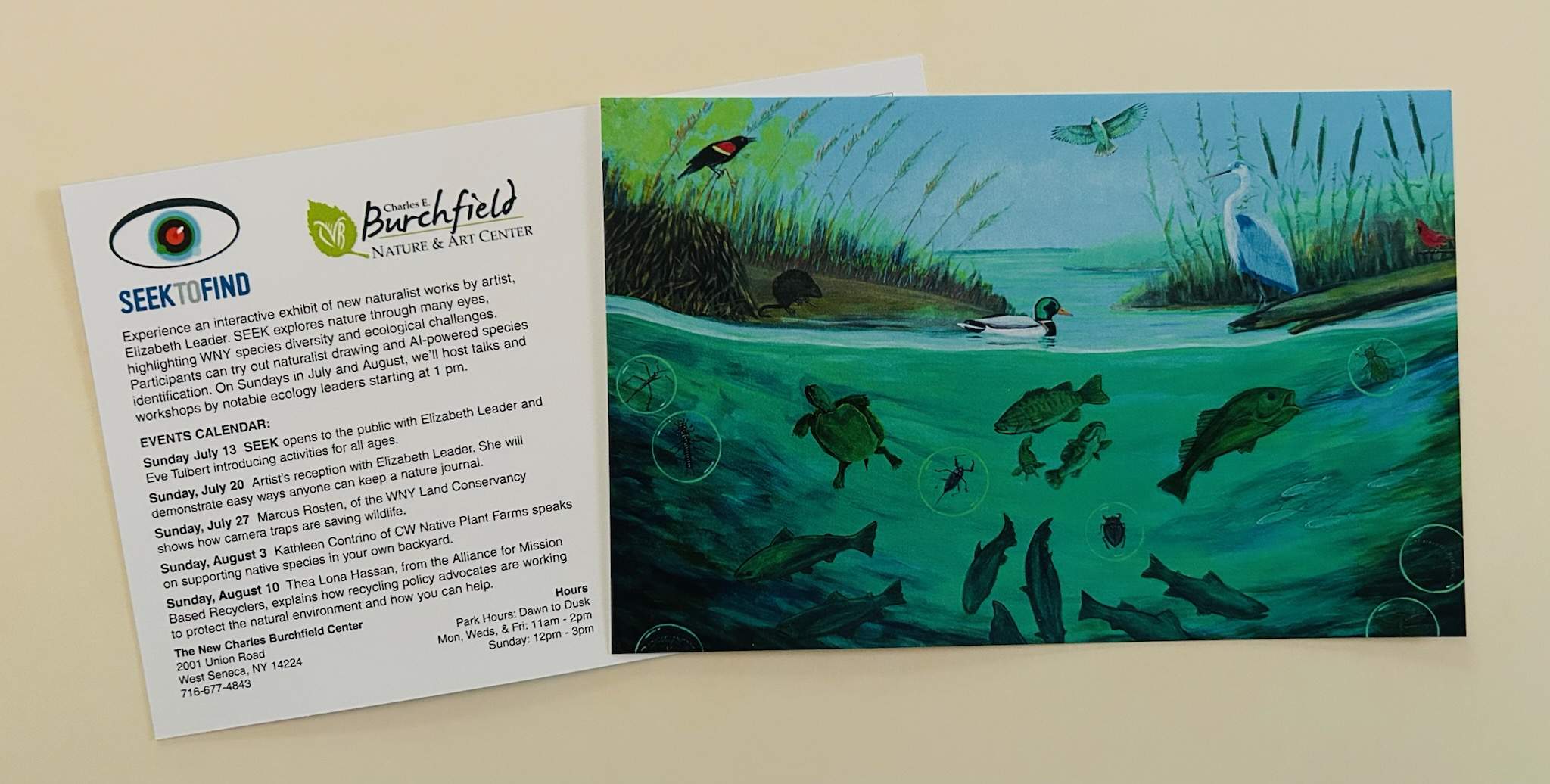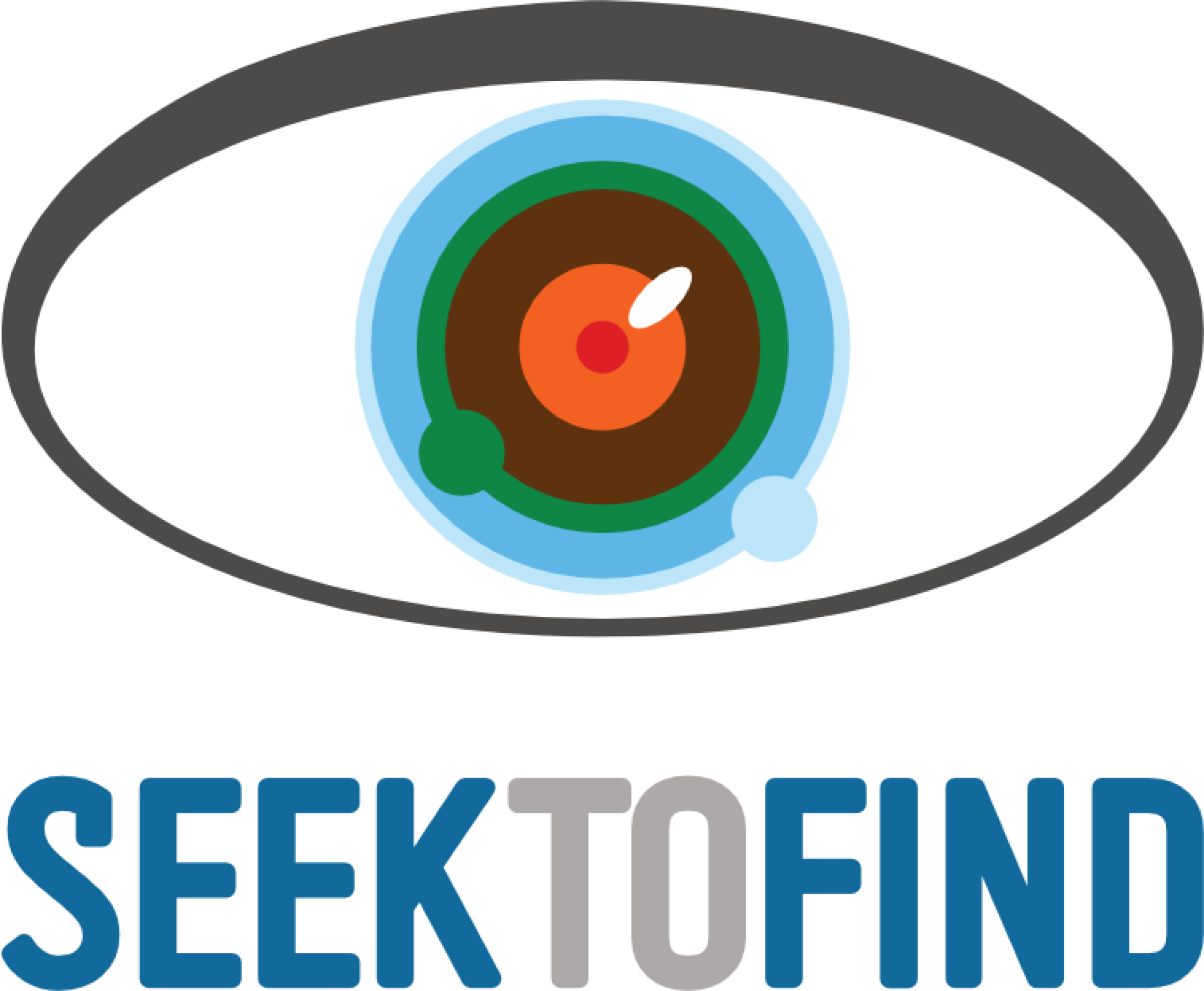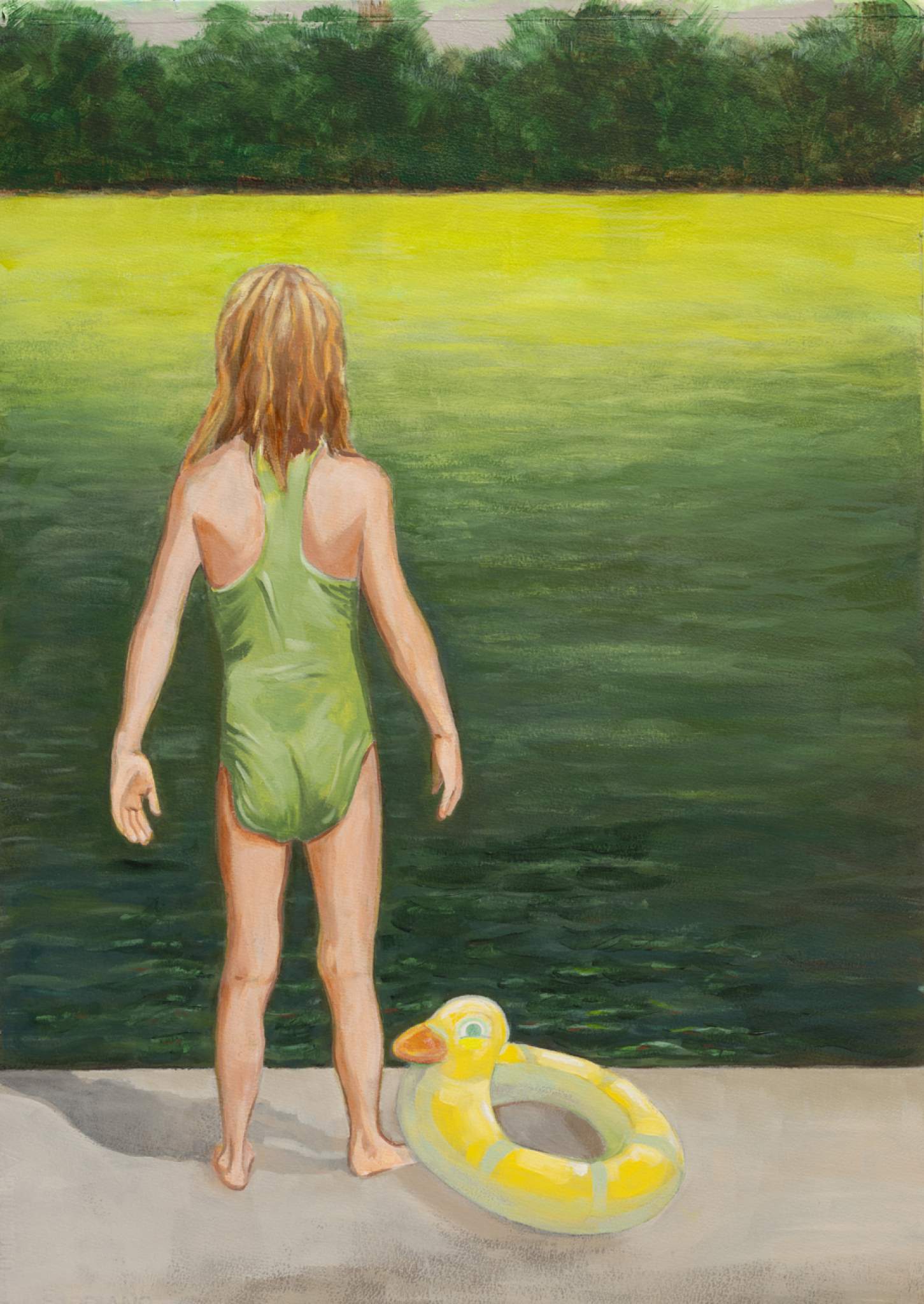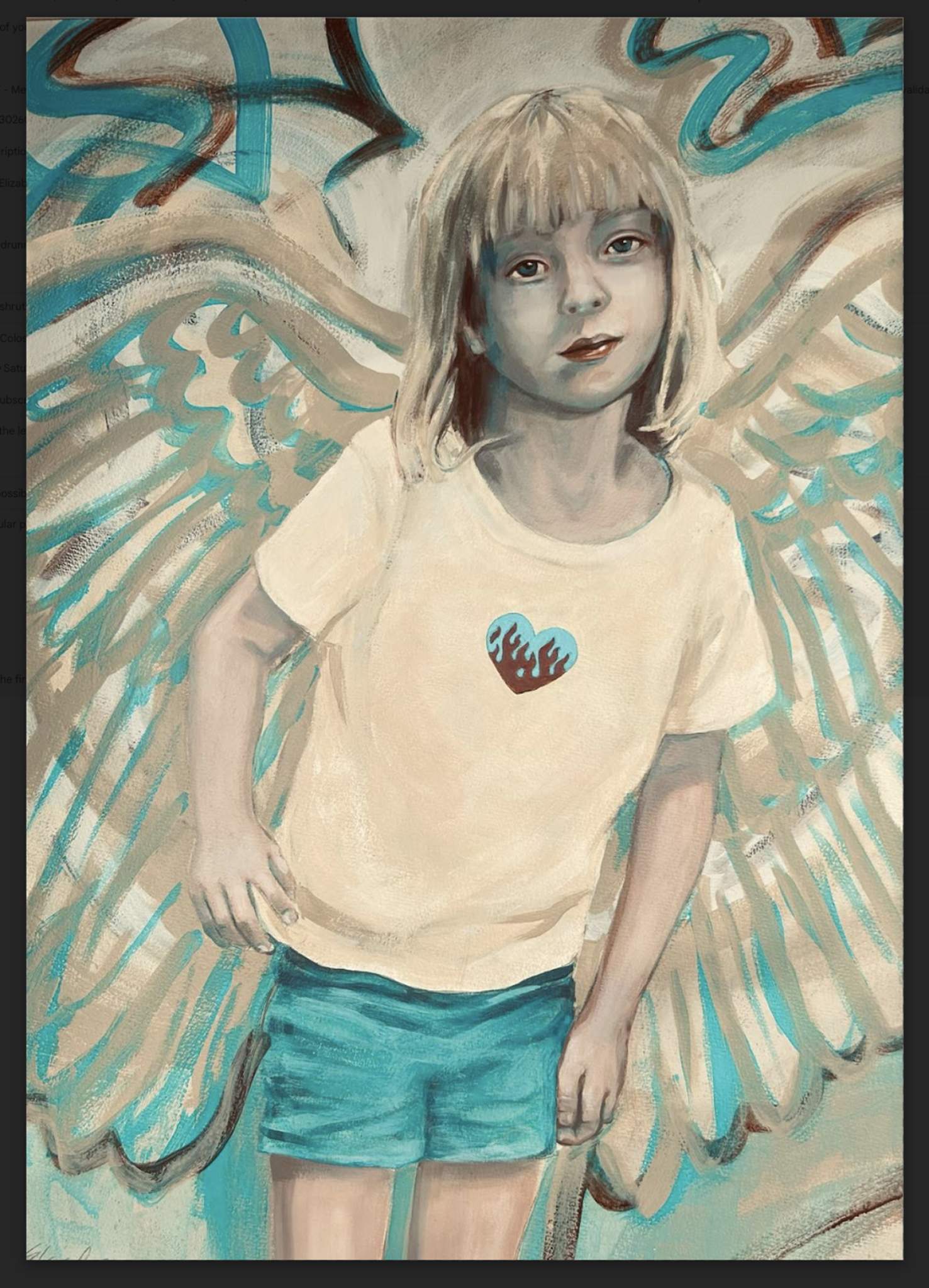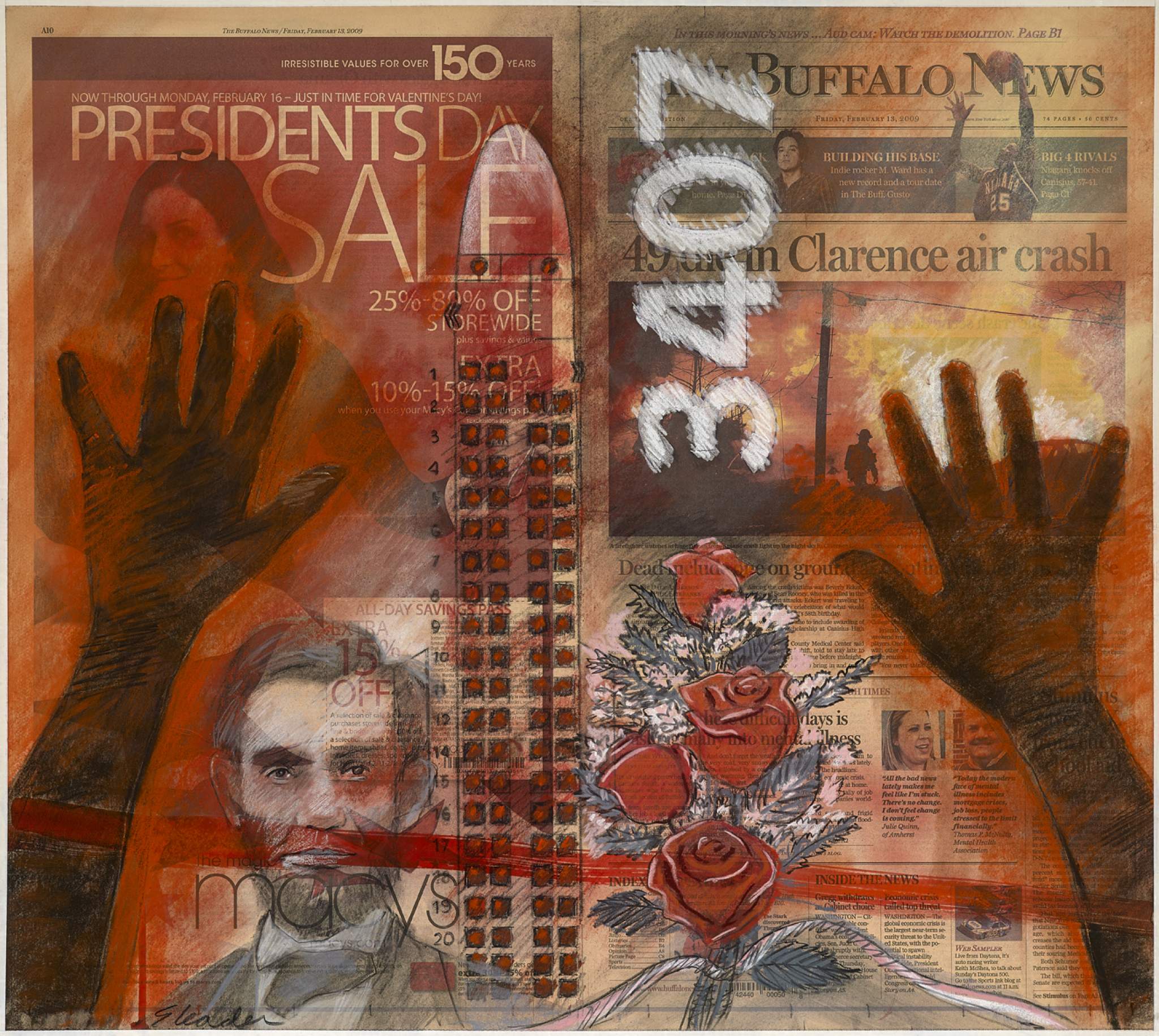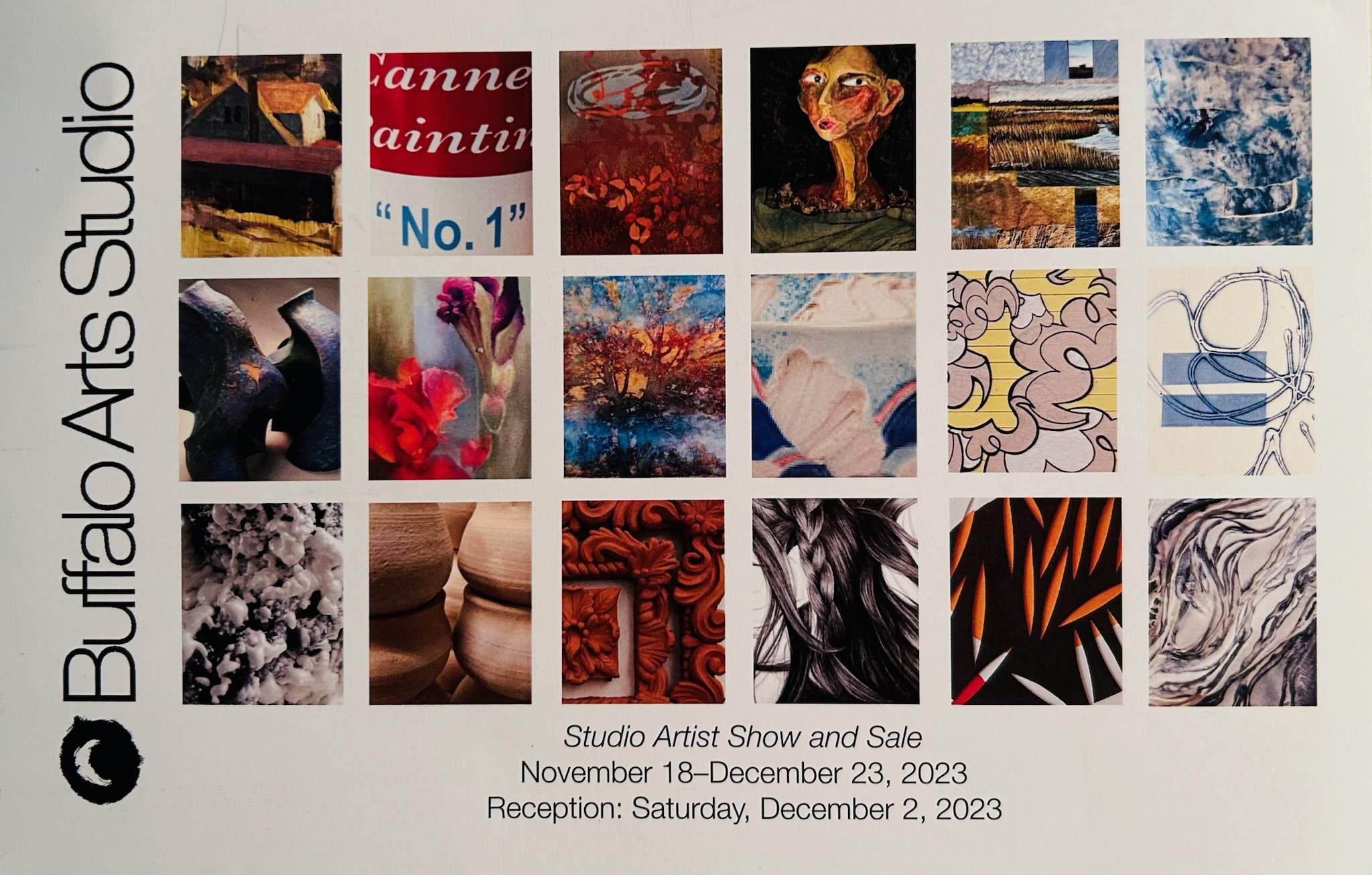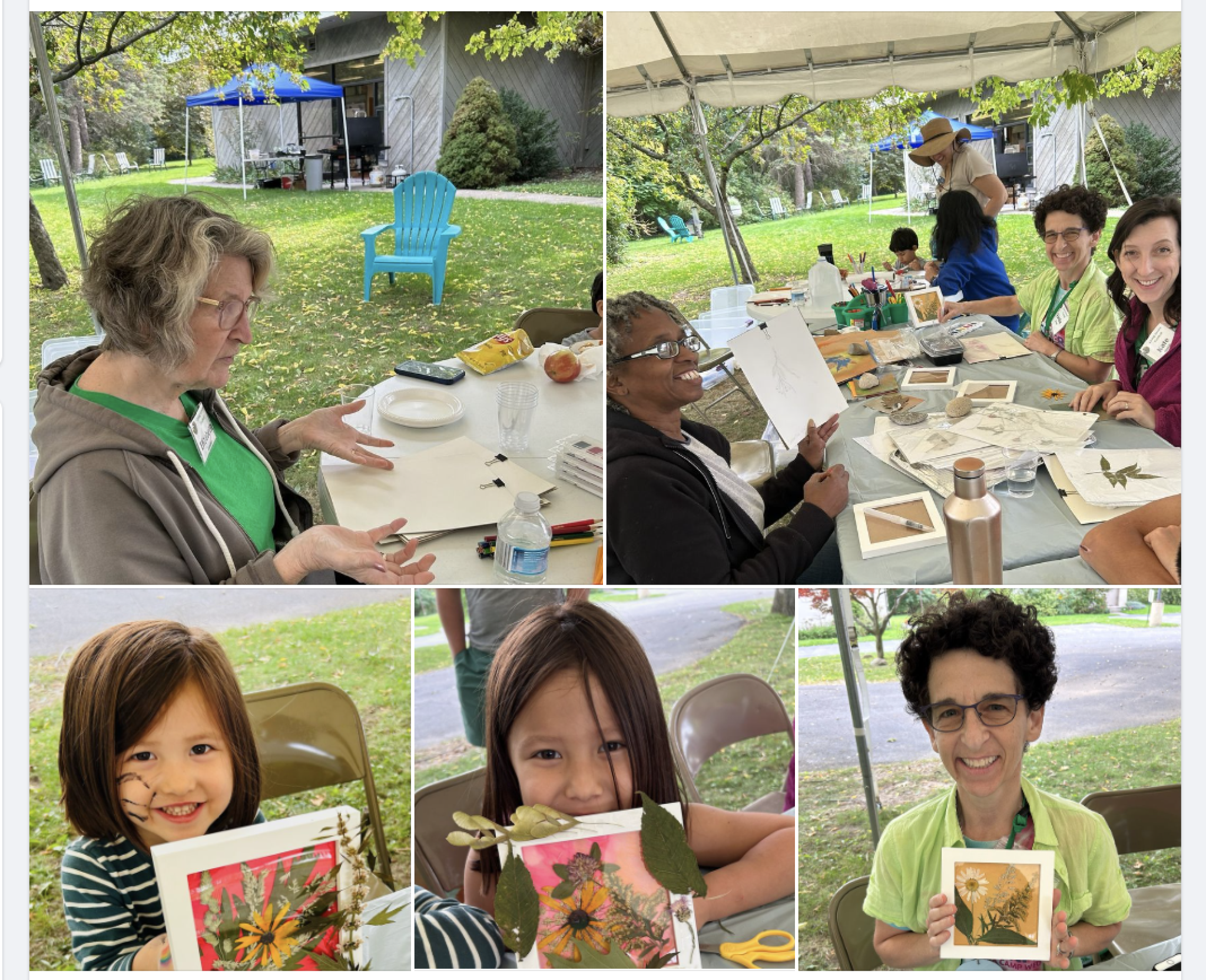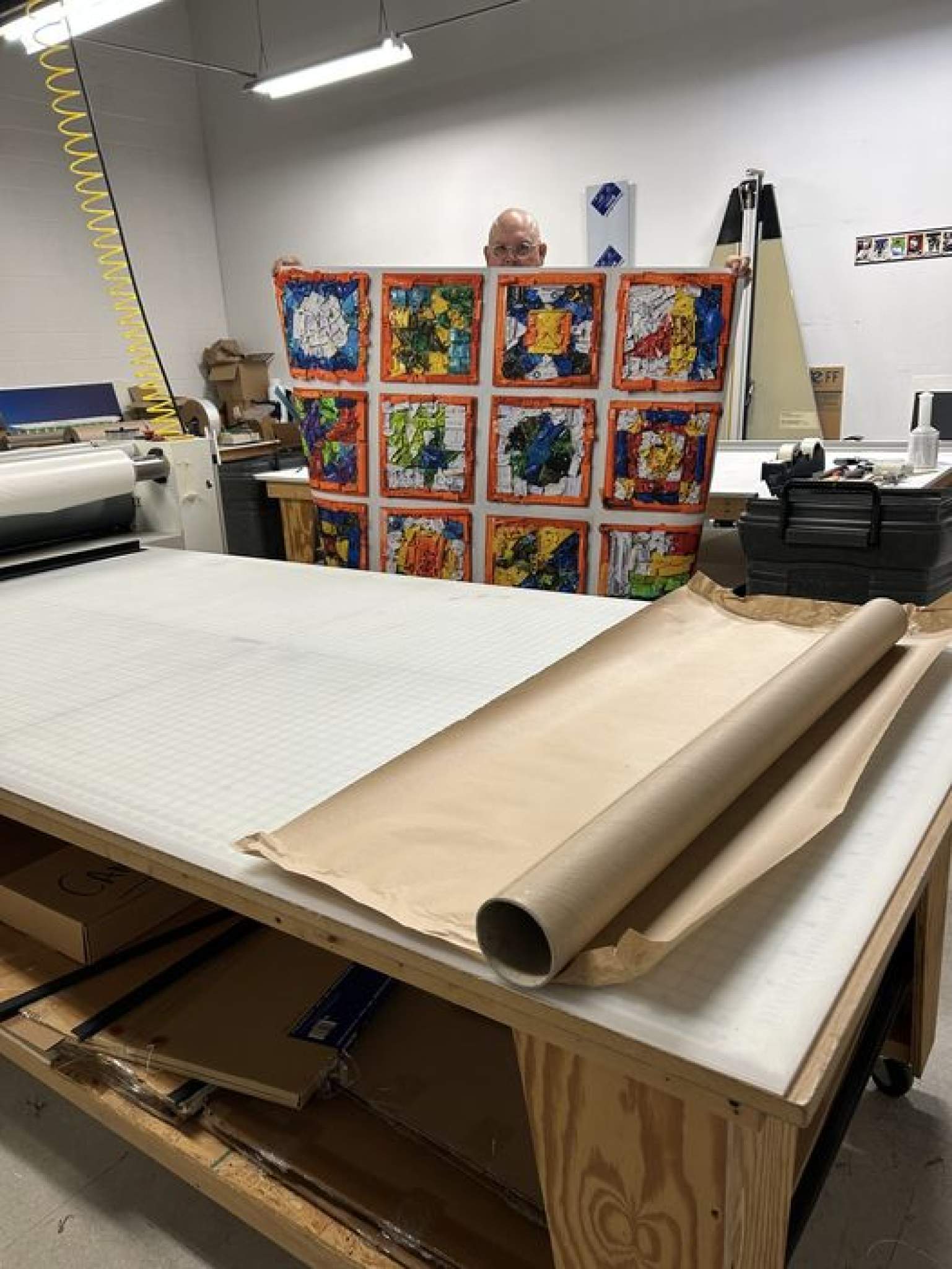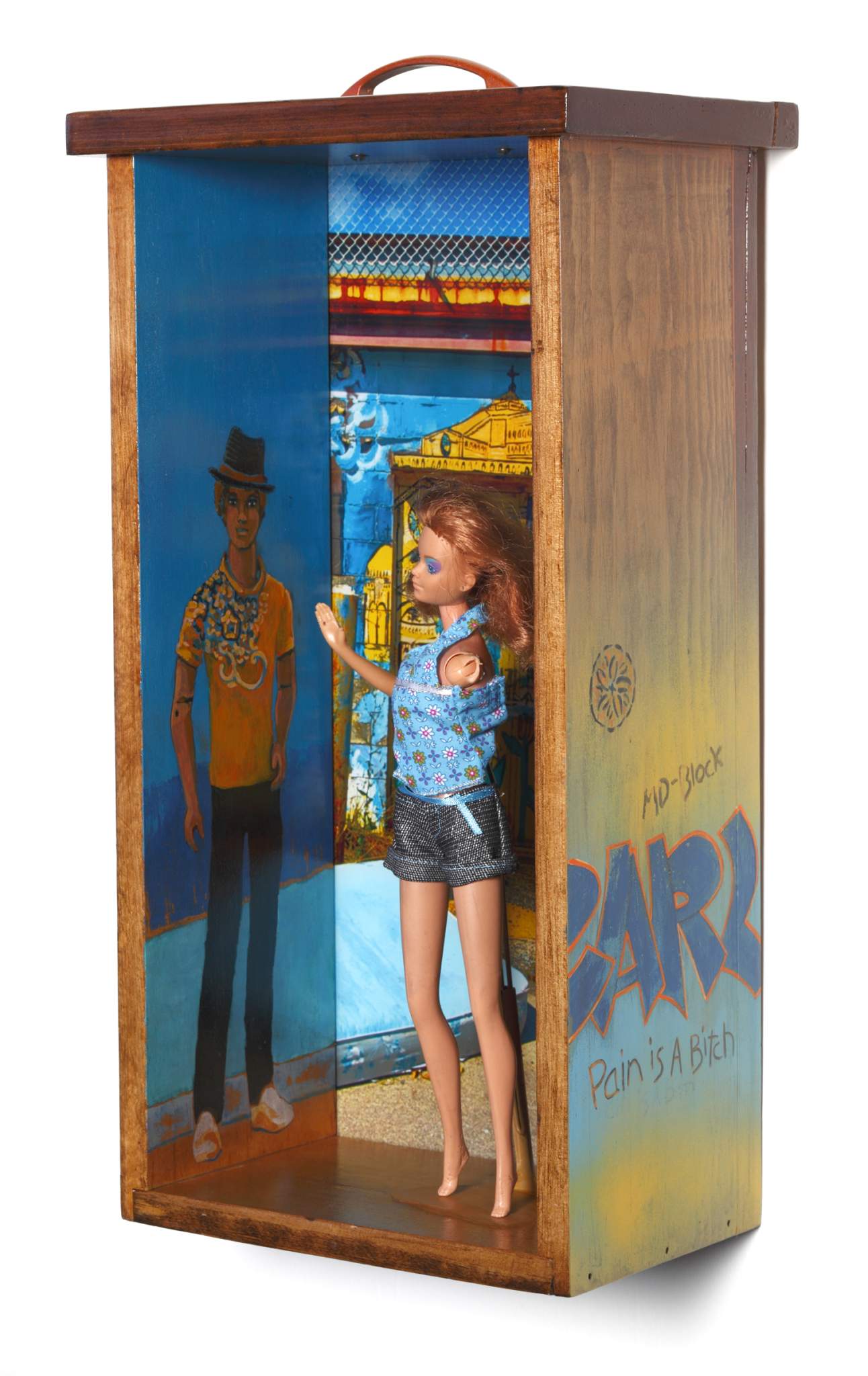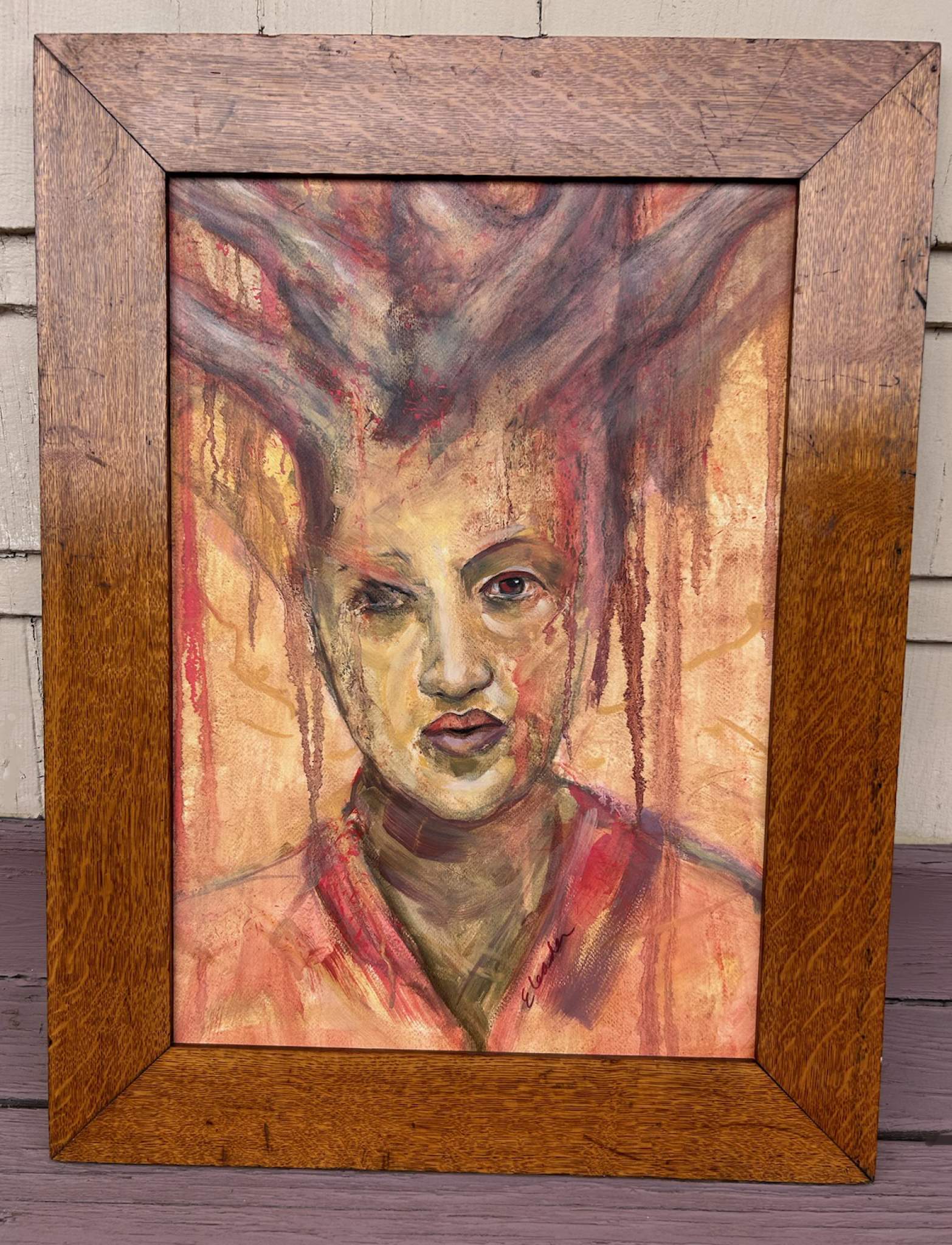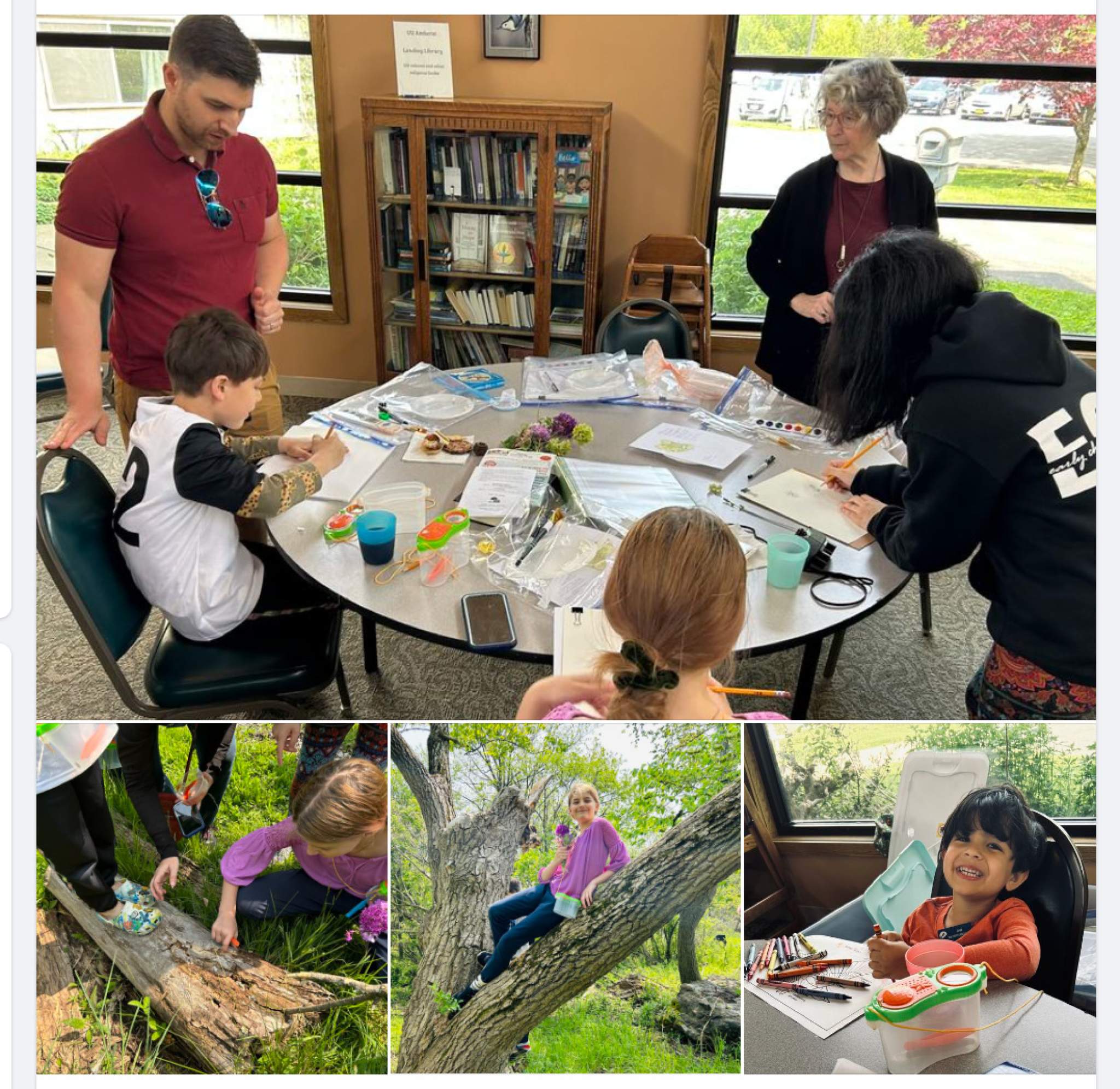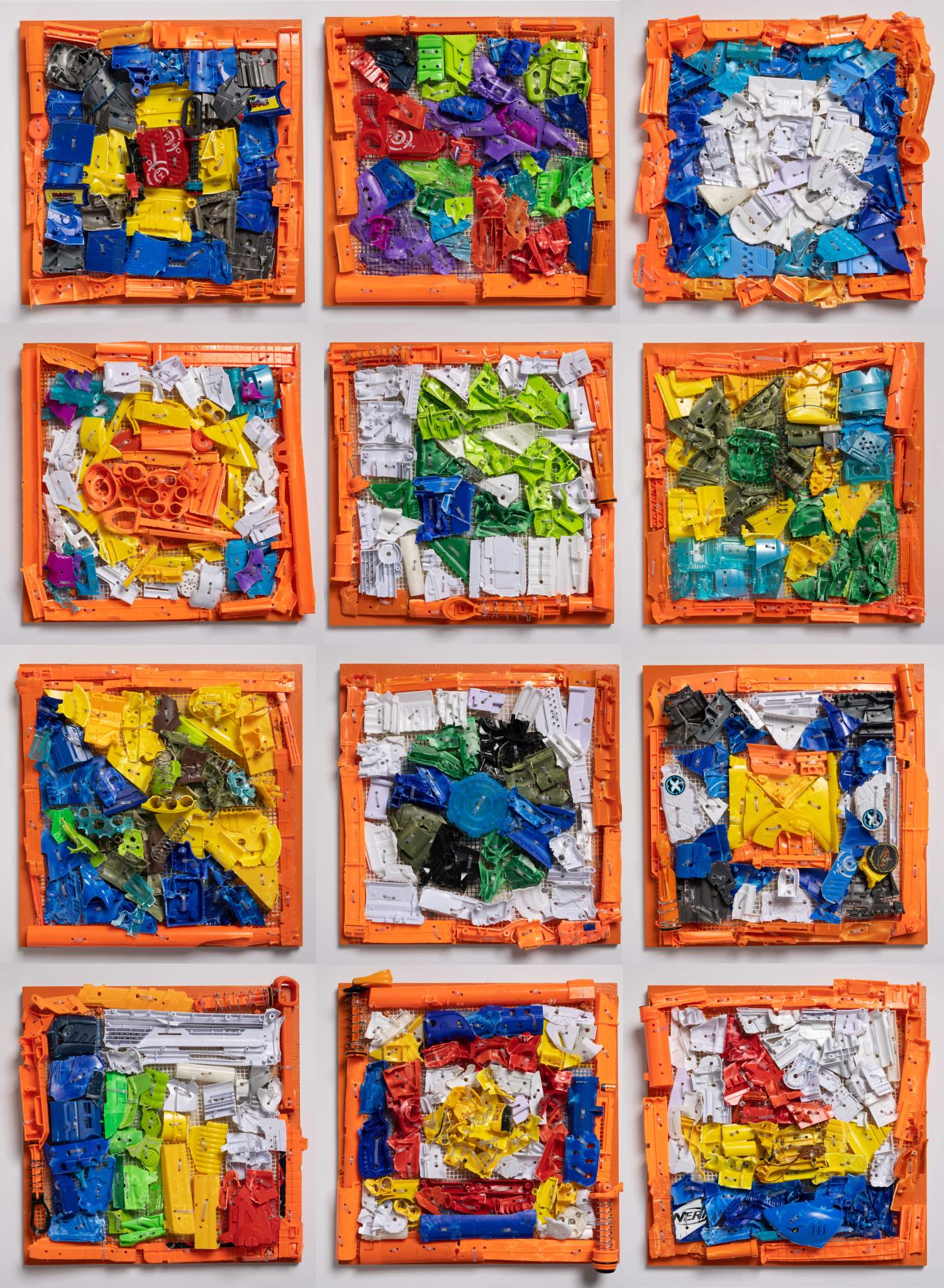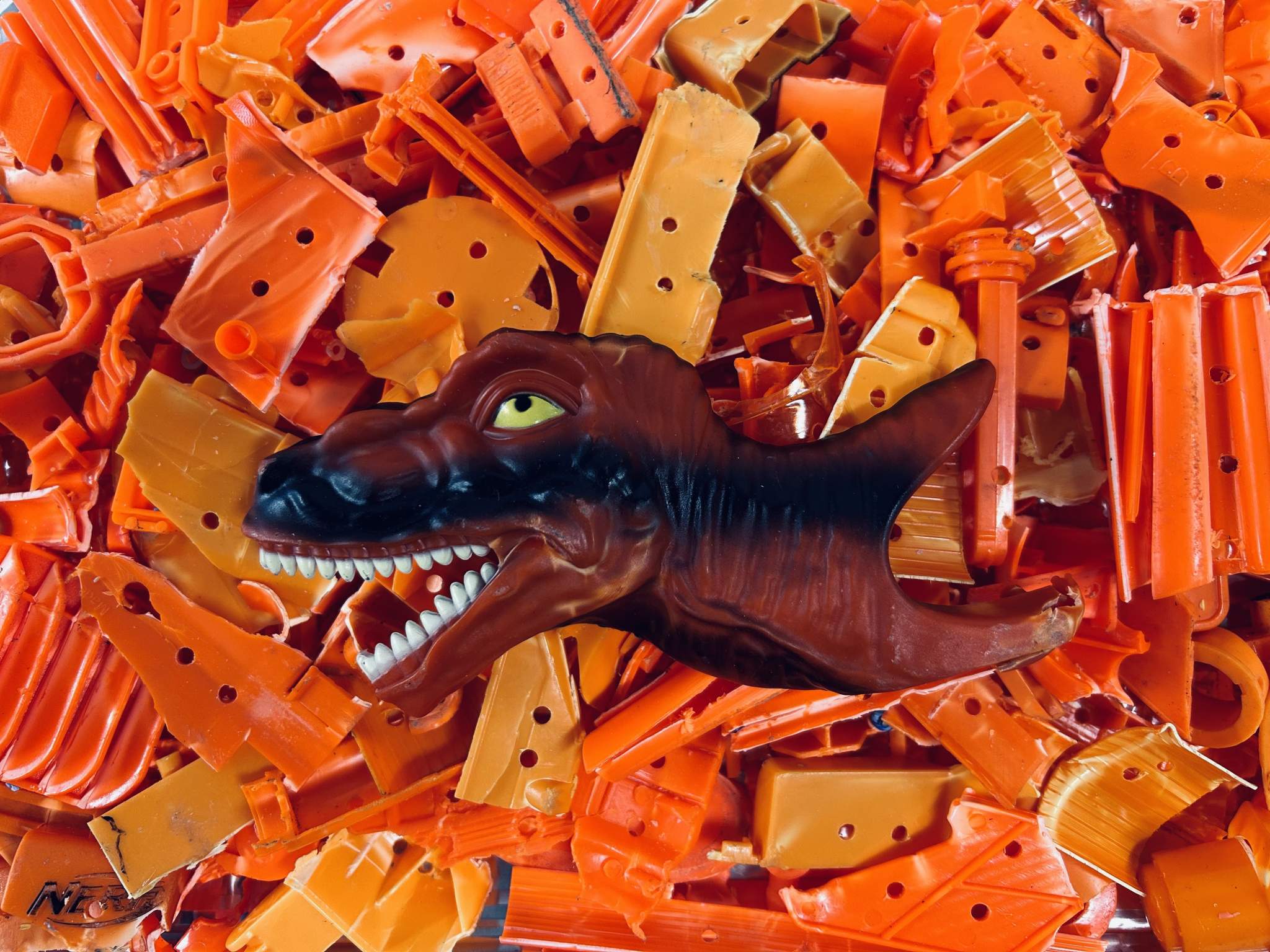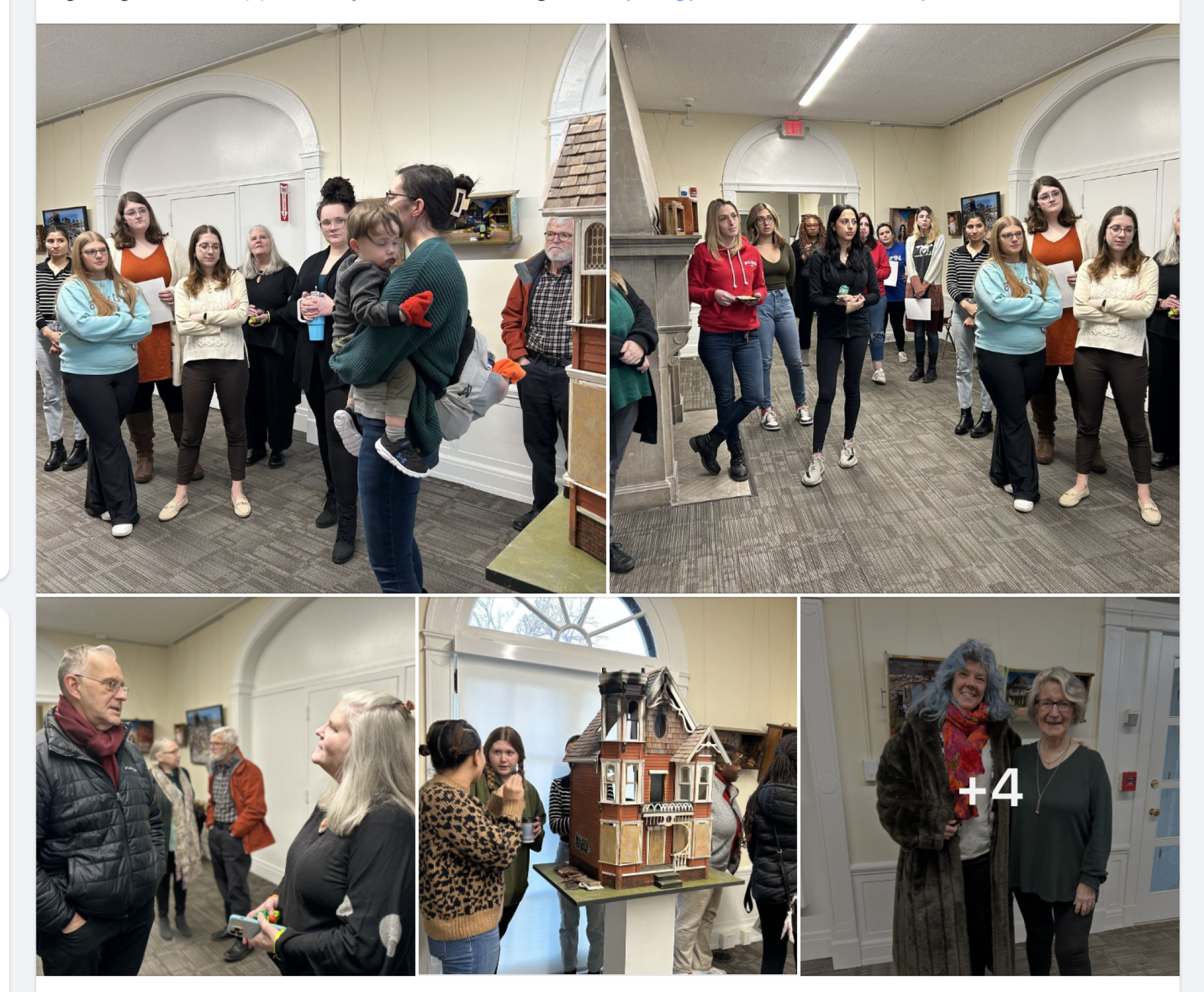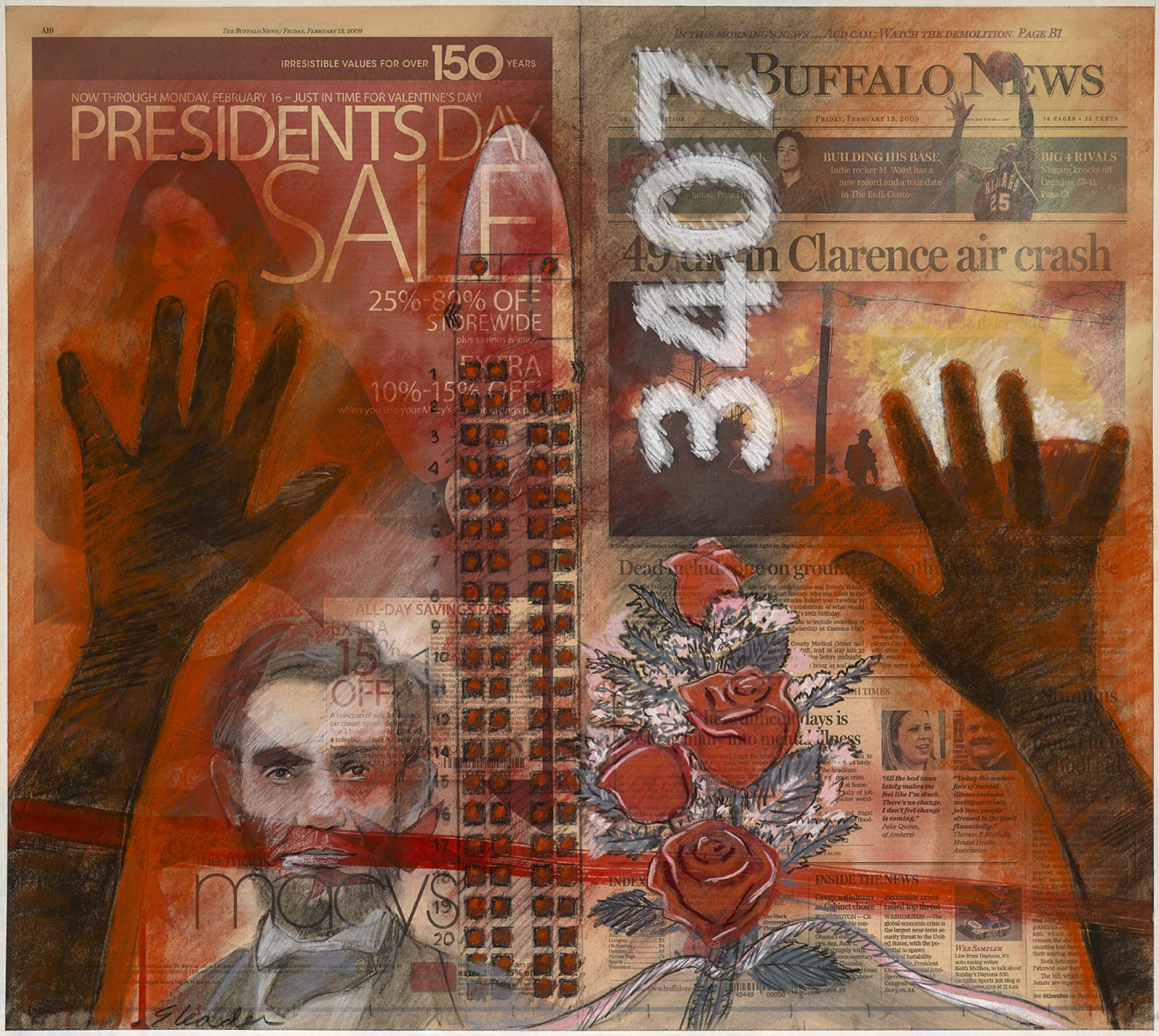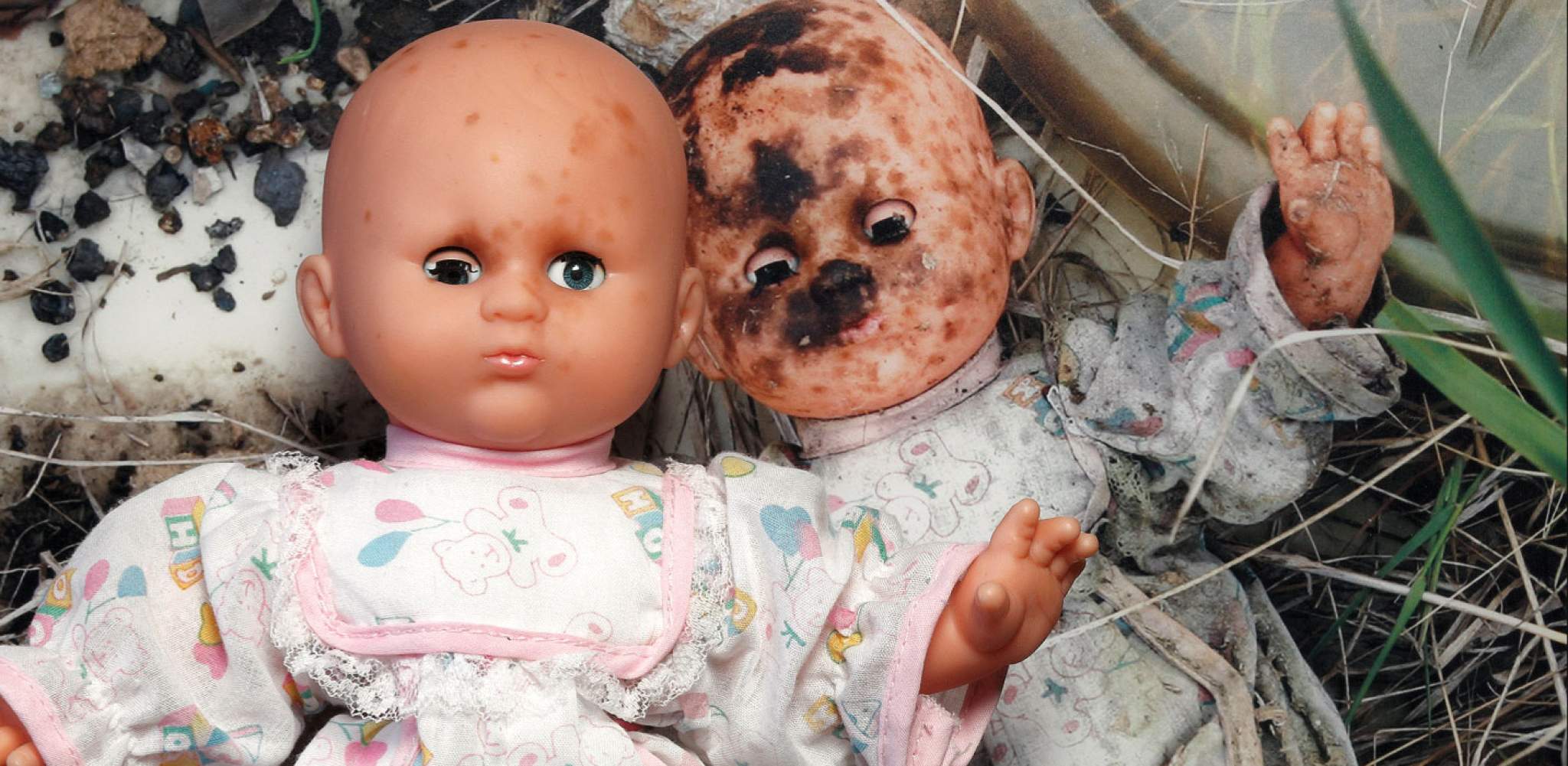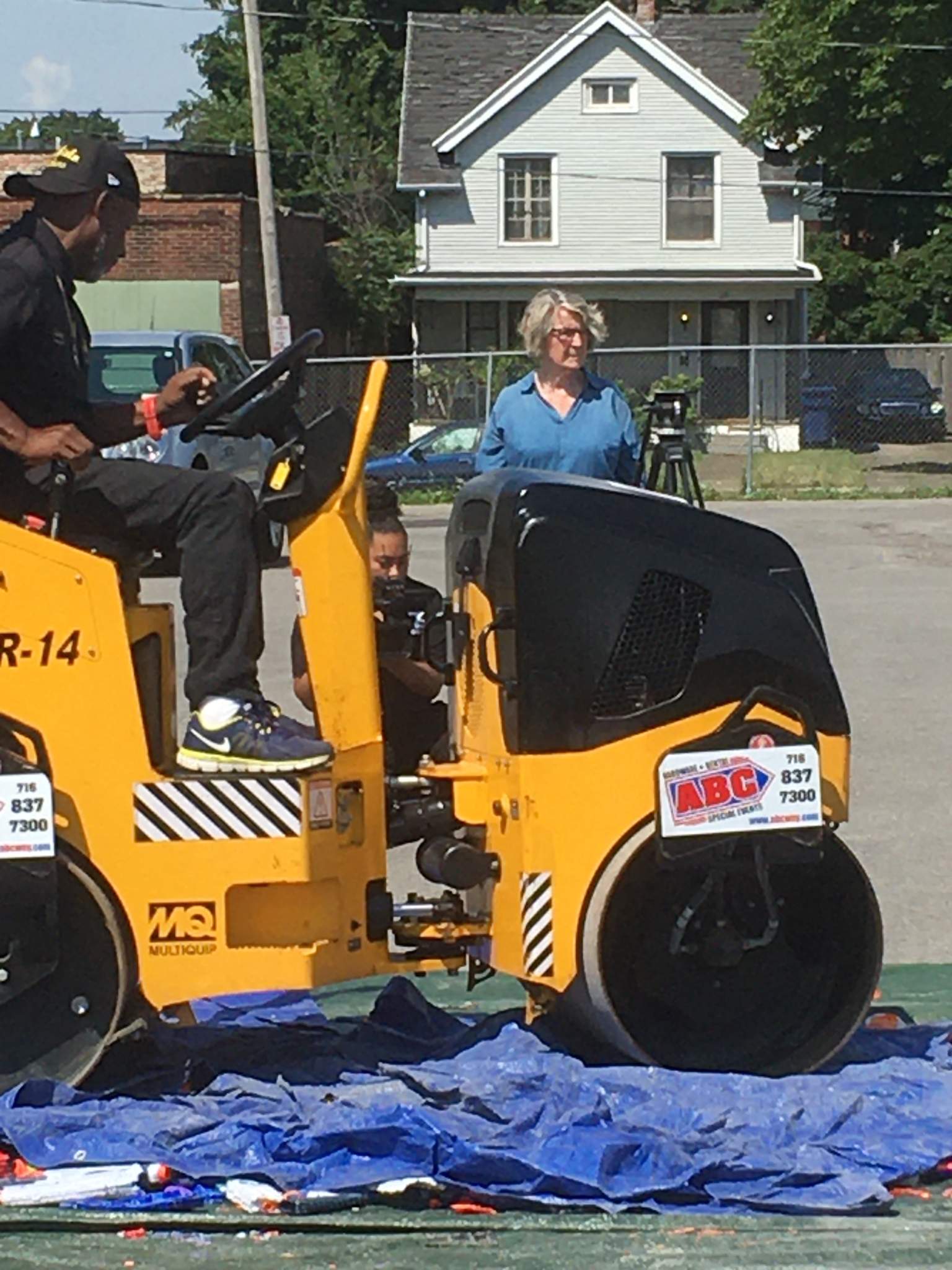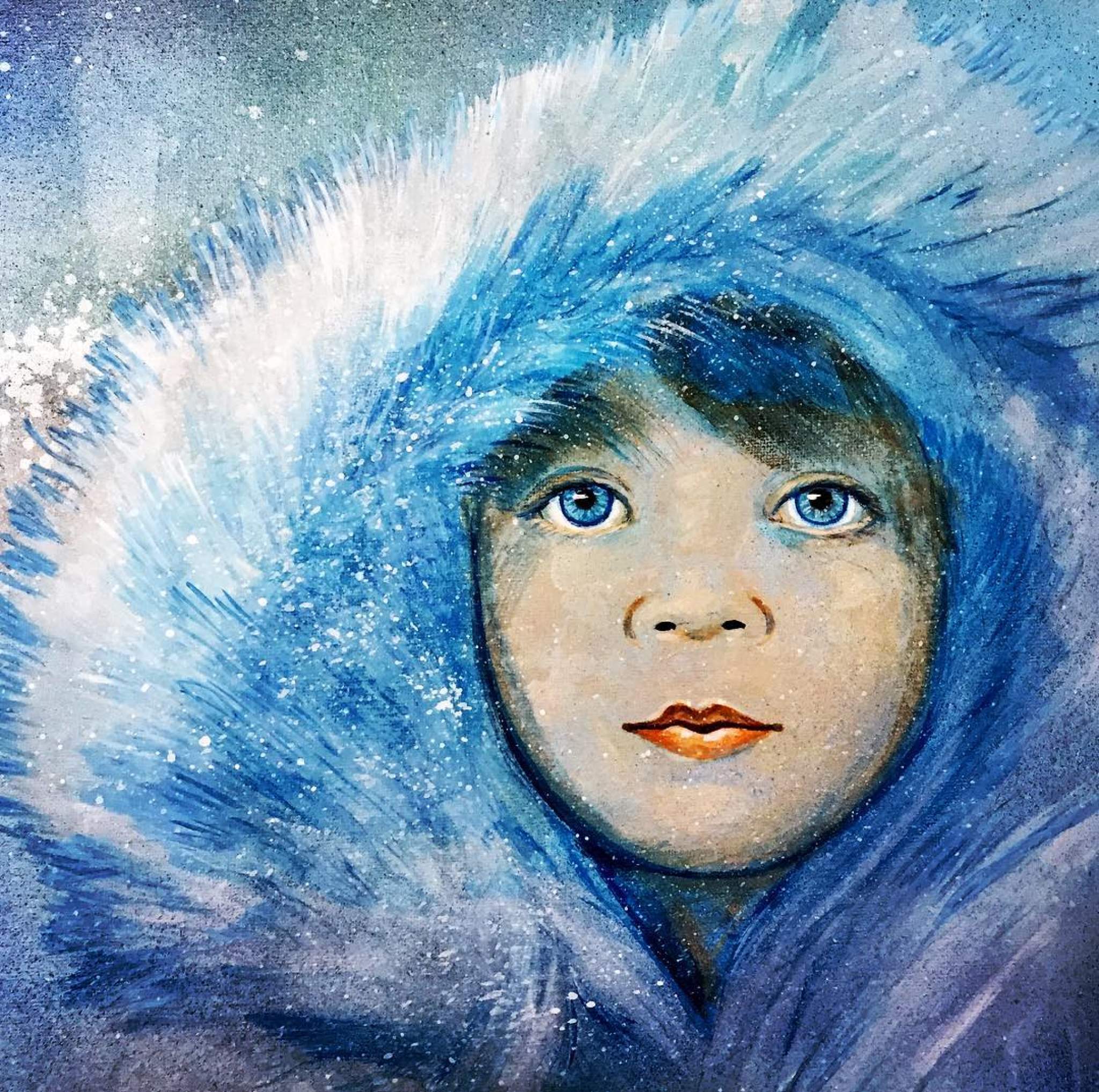FAMILY SECRETS
SEEK TO FIND
Posted on July 5, 2025
I am happy to announce that my solo show of new naturalist artworks will open at the Charles E. Burchfield Nature & Art Center on July 13th.
COMING THIS SUMMER - SEEK TO FIND
Posted on May 16, 2025
I'll be having a solo show at the New Charles Burchfield Nature & Art Center in West Seneca.
KEEPING ACRYLIC PAINT OUT OF OUR WATER SUPPLY
Posted on March 1, 2025
Acrylics are plastic and the last thing I want to have flowing down the drain. I am using the CRASH paint solids waste water cleaning system developed by Golden acrylic paint. I bought the kit for less than $40 online. It is available at various art supply stores and lasts a long time.
THE RIPARIAN EDGE
Posted on January 31, 2025
With all the tragic news in the country right now, I thought I would just post some peaceful color. This is the beginning of a large painting of the riparian edge- the transition zone between land and water. Fighting for clean water is a top priority for me and a subject I often explore in my art. I’ll post this painting again when it is further along and lots of creatures are in place.
SECRETS
Posted on October 9, 2024
A tragic family secret pushed me onto my path as an artist. When I was 22, I accidentally discovered that the grandmother I had never met had just died in an insane asylum. Katherine had succumbed to postpartum depression after the birth of her third child and my grandfather, Casper, had committed her to the asylum for the rest of her life. In the era before the development of psychotropic drugs, a husband had the power to lock a difficult wife away. This secret rippled out in many destructive ways over the next generations.
Looking back, I realize why I try to recognize misogyny and all the forms of hatred it takes.
#grandmother #misogyny #secret #familysecret #oilpainting #postpartumdepression #postpartum #insaneasylum
GREEN WATER
Posted on August 8, 2024
Please don't jump in! Extreme algal blooms have shown up in Western New York waterways.
#algae #acrylic #acrylicpainting #girl #bathingsuit #tonawandacreek #lakeerie #toxicwater
GABRIELLA THE MESSENGER
Posted on August 1, 2024
The Hallwalls 50th Annual Members Exhibition opened on July 12th. This my entry, 'Gabriella the Messenger'. Within Christianity, the archangel, Gabriel, announced the coming birth of Jesus Christ to Mary. In my imagination, the angel is a young girl who sounds an alarm for all fertile women and girls. #angel #hallwalls #acrylic painting #women #girl
FLIGHT 3407
Posted on February 15, 2024
It was 15 years ago that an inadequately trained crew crashed their plane into a home in Clarence, NY. Fifty people were killed including a man in the house. Relatives of the victims have been fighting ever since to require a "1,500 hour rule" for pilot training and have never given up despite all the airline lobbyists fighting against them. This ongoing struggle is still making news.
At the time of the crash, the entire city was in shock and mourning. I felt compelled to create this image the day after the event. Using pastels, I drew directly on the newspaper published that day. Ads for President's Day and Valentine's Day swirl around in the horror of the article about the crash.
EVERYONE IS INVITED TO THE STUDIO ARTIST SHOW AND SALE!
Posted on November 7, 2023
I've been working on a new watercolor and graphite series and I'm eager to present it at the Buffalo Arts Studio Annual Show and Sale. This exciting event brings together all thirty one studio artists, each one with their own unique style.
The Open House & Artist Reception will be on Saturday, December 2, 2023 from 5:00-9:00pm. Every studio will be open and there will be free refreshments and a donation-based bar. It's always a busy and fun evening!
NATURE JOURNALING AND NATURE CRAFTS
Posted on September 28, 2023
I was at the LIVING GREEN FESTIVAL at the UU Church of Amherst on September 23rd. I gave a little workshop on watercolor and nature journaling. I also presented a 'Make It and Take it" activity with little framed collages of natural materials. Everything was a big hit with all ages!
GUERRILLA GARDENING
Posted on September 20, 2023
I found a spot that humans don't care about - a place where they do not mow. In this case it is the drainage ditch by the Target on Delaware Ave. in North Buffalo. There appears to be a channel of water at the bottom where cattails are growing. This neglected spot is actually a little nature sanctuary protected by a chainlink fence. Birds are singing and a monarch butterfly floats by. I have had a bountiful crop of milkweed in the backyard this season and want to share it. I take out my bag of bursting pods and scatter them to the wind. I wish them a spot of soil, a bit of water, a good winter and a chance to rise up next year!
A COMMUNITY QUILT - READY TO TRAVEL THE WORLD
Posted on August 22, 2023
Here is Biff Heinrich of IMG_INK, in downtown Buffalo. Biff has pulled a full size print of the "Community Quilt" made from pieces of toy guns. The quilt was a long term project involving many volunteers. It began after the mass shooting at the Tops on Jefferson when toy guns were collected in exchange for healthy toys. The guns were broken down (a difficult job that even involved a steam roller) and then transformed by volunteers at the Buffalo Arts Studio. Each square was photographed by KC Kratt and then given to Lenny Lane of F.A.T.H.E.R.S. Now the quilt lives on as a print that can be easily moved around and hung in many locations.
THANK YOU TO EVERYONE INVOLVED!
NATURE JOURNALING
Posted on August 3, 2023
After working with plastics for most of the winter, I am taking a break and spending time outside. Watercolors are a form of meditation, forcing me to pay attention to the beautiful little details of life. Here are a few sketches of things found in the backyard.
BARBIE, KEN and TOYOLOGY
Posted on July 24, 2023
Since the world is currently fascinated by Barbie, I want to show off my own Barbie doll -part of my Toyology series. Over the last several years, when I come upon discarded toys, I resurrect them. I make display boxes out of castoff wooden drawers that have their own long history of use and abuse. For each assemblage, I subsurface-mount a photograph of the discovery site to the back wall of the box. I paint the sidewalls with location markings and with graphics related to the toy’s background. On a side panel, I paint, in miniature, the graffiti I saw in the vicinity of the site. The toy, the location and the graffiti are all separate stories that come together.
Here is the world where I found my Barbie doll - Rodney Avenue in Buffalo. Barbie looked like she had been chewed up by a dog but looked better after I bought her a cute outfit at a thrift stop. I found a reference for Ken and painted him on the side wall. I think Barbie had an adventure on the wild side, but she's not talking.
To see more toys in this series, go to Portfolio > Toyology
THE FORESTS ARE BURNING
Posted on July 7, 2023
This painting is my interpretation of a forest spirit mourning the wildfires raging across the continent. It has been so disturbing to experience the bad air quality and see the haze hanging over the landscape just at the time we want to enjoy nature. Now nature is in turmoil.
I painted this spirit in oil on Fabriano paper and then framed her in oak from ReUse Buffalo.
She is part of the Hallwalls Annual Members Exhibit which opens on Friday, July 14th with a reception from 6 to 10 pm.
Hope to see you there!
NATURE JOURNALING TO GET KIDS EXPLORING!
Posted on June 6, 2023
After working with plastics for many months, it is a great relief to be outside exploring the natural world. My daughter, Eve, and I lead nature journaling activities for children at the Unitarian Universalist in Amherst, New York. The church owns a large tract of protected land known as the Waterhouse Ecology Center. We all enjoy exploring the trails and then coming back inside the church to study and draw what we have found. I am thrilled at the kids' energy and ability to make
great discoveries!
TOY GUNS ARE TRANSFORMED INTO A COMMUNITY ARTWORK
Posted on May 4, 2023
In Buffalo, NY, on May 14, 2022, a mass shooter killed ten people at the Tops Supermarket on Jefferson Avenue.The peacekeeping group, F.A.T.H.E.R.S., had been working with youth in the neighborhood for over twenty years. They set up a program to exchange toy guns for healthy toys and collected hundreds of guns. Rather than just toss them in a landfill, I volunteered to find a way to turn some of the plastic into an art project. The guns were difficult to break down into useful pieces and at one point had to be crushed with a steamroller. With the help of a wonderful group of people, we went through the process of cutting, drilling and twist-tying pieces together to form a 'quilt.' Designs were loosely based on 'underground railroad' patterns.
I am so grateful to all of the people who helped. They are, in alphabetical order:
Marti Cat, Hal Leader, Rowan Leader, Charles Martin, Becca Schwarzberg, Rose Synor, Phyllis Thompson, and Shirley Verrico. THANK YOU!
IF ONLY THERE HAD BEEN A PAUSE
Posted on April 19, 2023
Recently the Future of Life Institute sent out a letter signed by more than 1000 technology leaders including Elon Musk. The group called for a pause in the development of artificial intelligence (AI tools) that present "profound risks to society and humanity." "Shared safety protocols are needed before unleashing."
If only there had been a pause in the development of plastics. Could better guidelines have been put in place before single use plastics swirled in the gyres of the oceans? Could microplastics have been kept out of products before they ended up in our bodies? Plastics are a forever material made without concern for the seventh generation. I look at my grandchildren and wonder how much plastic their bodies are already carrying. As I move through the world I try to minimize my single plastic use. To avoid it takes planning and preparation but I vow, as one person, to do what I can.
THE TOY GUN PROJECT UPDATE
Posted on April 3, 2023
After collecting hundreds of toy guns, we had to break them down into pieces that could transform into some sort of community artwork. Over the course of several months, we have attacked them with saws, hammers, pliers, heat guns and a steamroller. Once the toy gun parts were small enough, each piece had to be drilled with holes to allow them to be attached to a Latch Hook Canvas background.
In the course of this long process, I have had to handle more plastic and learn more about it than I ever wanted to. The majority of plastic toys are made from polyethylene, polypropylene, polyvinycloride, polystyrene, polycarbonate and polyester. All of these "polys" are useful, versatile and attractive for toys because plastic is almost INDESTRUCTIBLE! But the wonderful benefits of plastics are also its dark side. Every piece in this little video is material that came out of an oil well and is now out in the world forever.
FACEBOOK HELPS!
Posted on March 8, 2023
My TOYOLOGY exhibit opened last night at Daemen University. I was honored to see so many
unexpected Facebook friends coming in to check out the show.
A big thanks to Meri Stiles, Curator and Associate Professor of Social Work for giving me this opportunity.
The exhibit is in Curtis Hall, West Wing and runs until May 2, 2023. #daemenuniversity #toyology
FLIGHT 3407
Posted on February 13, 2023
LIVE ON FIVE, the Big Auction of Small Works is Back
Posted on February 6, 2023
I'm working on 5"x5" paintings for the LIVE ON FIVE event at the Buffalo Arts Studio on March 11th. Since I also have my 'TOYOLOGY' show in March, I am in the frame of mind to paint some of the 'lost toys' I have found and saved. You can log on to BuffaloArtsStudio.org to see more about the event and get tickets. The team at BAS are working hard to create a wonderful party.
#toyology @DaemenUniversity #liveonfive2023 @buffaloartsstudio #acrylicpainting #losttoys
"Toyology" Solo Exhibit at Daemen University
Posted on January 5, 2023
As the new year begins, I am getting ready for a solo exhibit at Daemen University in Amherst. "Toyology" combines previous work with new pieces and I am excited to see it all together in this unique space.
Although it does not open until March, there are many details to arrange. Here is the invitation postcard which goes to the printer this week.
Everyone is invited!
UPDATE ON THE TOY GUN PROJECT
Posted on December 20, 2022
This past summer, we held a "steamroller event" in the TriMain parking lot. Lenny Lane, of the F.A.T.H.E.R.S. organization, rolled over and crushed several hundred toy guns. Since that time we have sorted and organized the pieces, breaking them down by color and size. Shirley Verrico and I held a brainstorming session at Buffalo Arts Studio with artists who work with unique materials.
Kathy Sherin, Ani Hoover, Bill Koch, Rebecca Schwarzberg and others have all added their expertise. These toys are difficult to work with, hard to break down or melt and are filled with wire springs. So far we have presented four possibilities to Lenny's group and we will wait to see what the community prefers. See the attached PDF and contact me if you have questions or ideas to add to the mix.
BUFFALO SNOW
Posted on December 1, 2022
November 20, 2022 was the date for the historic Lake Effect storm that slammed Western New York. Over 80 inches fell in the southtowns with just a foot up in the city of Buffalo. The event made national news and showed off the well organized teams who plowed out and got everything running smoothly again. Then the weather changed and now there is no evidence of what we all went through. What else will nature bring us this season? Here is my 'Buffalo Snow Girl', acrylic on canvas. She loves snow!
